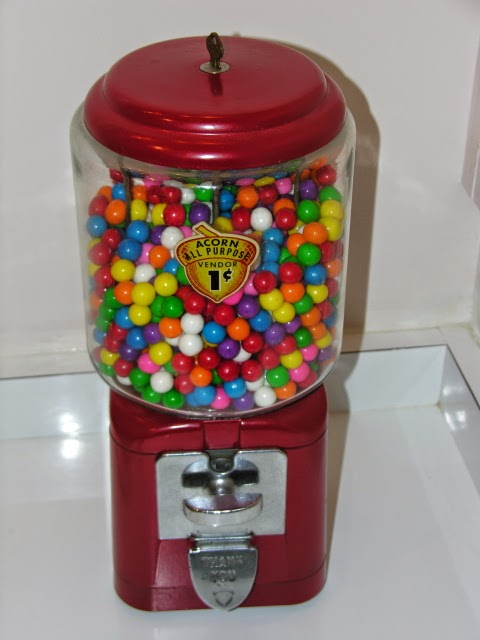 One of my fondest memories of childhood was a trip to the beach. If you were from Brooklyn, Coney Island or Brighton Beach were the seaside destinations of choice since they were accessible by train. Rockaway Beach in Queens was also an option, but traveling there from Brooklyn by public transportation involved visas and passing through customs. Besides, Queens was a strange, exotic borough where they had trees and other suspicious things. Even to get to Coney we had to take two trains, the "A" train from our Rockaway Avenue Station to Franklin Avenue, and then upstairs to the elevated Franklin shuttle all the way to the end of the line.
One of my fondest memories of childhood was a trip to the beach. If you were from Brooklyn, Coney Island or Brighton Beach were the seaside destinations of choice since they were accessible by train. Rockaway Beach in Queens was also an option, but traveling there from Brooklyn by public transportation involved visas and passing through customs. Besides, Queens was a strange, exotic borough where they had trees and other suspicious things. Even to get to Coney we had to take two trains, the "A" train from our Rockaway Avenue Station to Franklin Avenue, and then upstairs to the elevated Franklin shuttle all the way to the end of the line.At the time, this train had straw-covered seats, something that could never last with today's vandalism-prone riders.
 As you approached Coney Island, you smelled the ocean through the open train windows. Then the fabulous parachute jump loomed in the background and hooray, you were there. As your mother dragged you by the hand for the short walk to the beach, the sights, sounds and smells overwhelmed you. Coney Island along the boardwalk and streets was a riot of rides, snack stands, freak shows and carnival games. The original Nathan's sold hot dogs that had a juicy snap when you bit into them, crispy, crinkle-cut french fries in a paper cup, and the unlikely but delicious treat, chow-mein on a bun. Nathan's is still there, and despite years of decline, Coney Island is on the rise again.
As you approached Coney Island, you smelled the ocean through the open train windows. Then the fabulous parachute jump loomed in the background and hooray, you were there. As your mother dragged you by the hand for the short walk to the beach, the sights, sounds and smells overwhelmed you. Coney Island along the boardwalk and streets was a riot of rides, snack stands, freak shows and carnival games. The original Nathan's sold hot dogs that had a juicy snap when you bit into them, crispy, crinkle-cut french fries in a paper cup, and the unlikely but delicious treat, chow-mein on a bun. Nathan's is still there, and despite years of decline, Coney Island is on the rise again.
Getting from the boardwalk to the spot on the beach where you wanted to set up your blanket involved a Brooklyn maneuver I call the "Blanket Walk". The sand was burning hot, so you tried to surreptitiously step on the blankets and towels of the people you passed along the way. I can remember the poor ice cream guy who walked around all day in the hot sand carrying a box of dry ice and hollering: "Get Your Good Humor and "Humorettes". We always brought lunch and a jug full of Kool Aid to save money. If they ever found one of those old brown bags soaked in oil from our pepper and egg sandwiches, they would have to call out a Hazmat team for disposal.
 Late afternoon at the beach was a nice time for things like looking for seashells and making sand castles. The crowds thinned out and sometimes you got to sit in the lifeguard's chair. Usually around 5 pm we would head up to the boardwalk for a visit to Steeplechase Park (see 10/6/08 post). Steeplechase was a fabulous place that sadly is gone today, but anybody who was lucky enough to visit will never forget such rides in and around the park as the Steeplechase Horses, the Panama Slide, the Parachute Jump, the Wonder Wheel and of course, one of America's last great wooden roller coasters, the Cyclone. This was also our time to get the great soft custard they dispensed from machines on the boardwalk in vanilla, chocolate, or my favorites, pistachio and banana.
Late afternoon at the beach was a nice time for things like looking for seashells and making sand castles. The crowds thinned out and sometimes you got to sit in the lifeguard's chair. Usually around 5 pm we would head up to the boardwalk for a visit to Steeplechase Park (see 10/6/08 post). Steeplechase was a fabulous place that sadly is gone today, but anybody who was lucky enough to visit will never forget such rides in and around the park as the Steeplechase Horses, the Panama Slide, the Parachute Jump, the Wonder Wheel and of course, one of America's last great wooden roller coasters, the Cyclone. This was also our time to get the great soft custard they dispensed from machines on the boardwalk in vanilla, chocolate, or my favorites, pistachio and banana. The train trip home was a long one, with a damp bathing suit, sand in your sneakers and a sun burn that would have to be dealt with in the morning. But it was all worth it...Coney Island is a place out of our carefree youth, and when we think back to the good times we had there, (in spite of the medicine bottles lined up on the counter), we are young again if only for a little while.
CLICK ON DATES AT TOP RIGHT TO SEE OTHER “SPALDEEN DREAMS” POSTS.












































